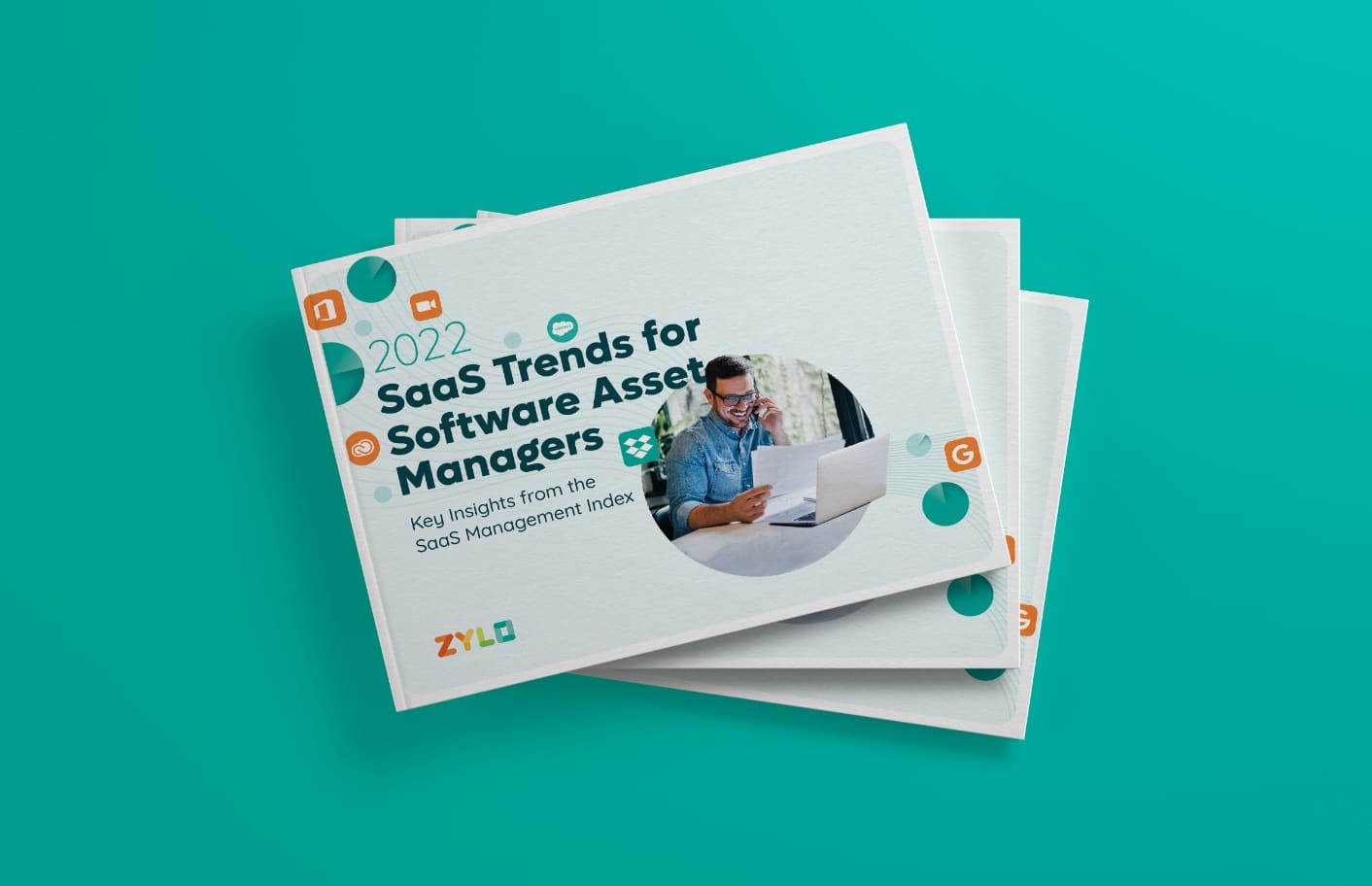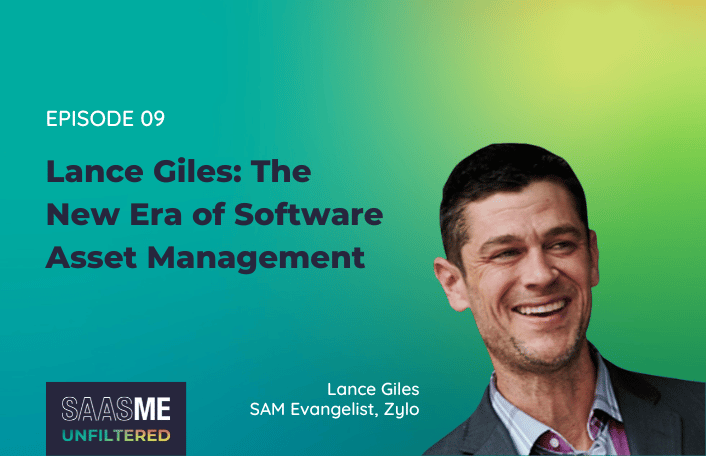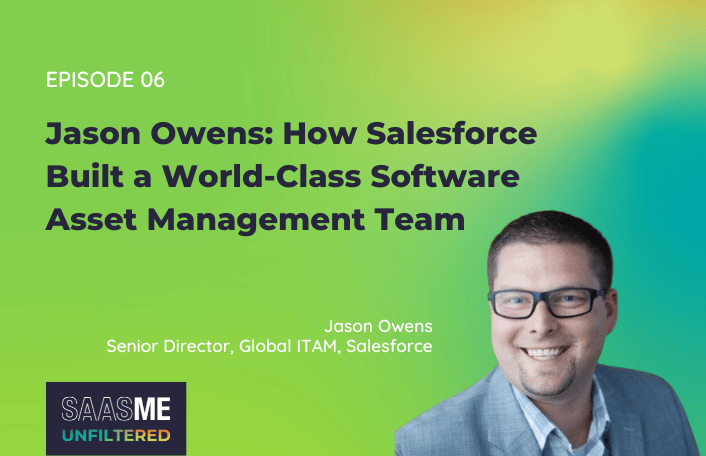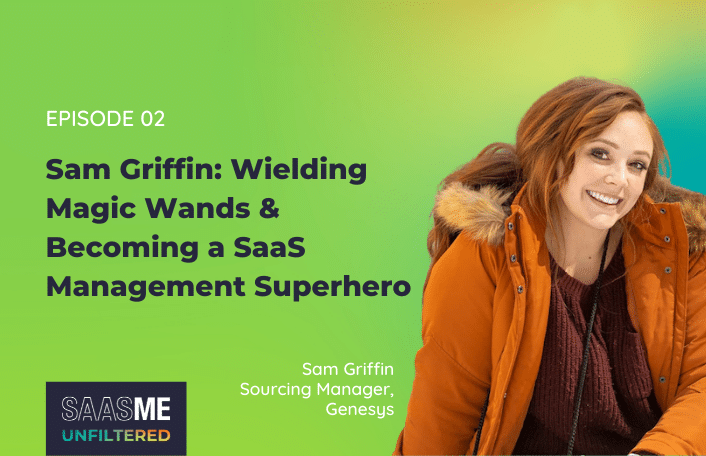
2022 SaaS Trends for Software Asset Managers
Rationalizing and optimizing your SaaS portfolio is an ongoing battle. But...
Back
Back
Search for Keywords...
Blog

08/30/2022
Table of Contents
Software Asset Management rose with the need to manage on-premise software. However, the birth of SaaS and cloud-based applications has changed the game. In this episode, former Nike SAM pro and Zylo SAM evangelist, Lance Giles, shares what a golden opportunity software asset managers have in front of them and the lessons he’s learned diving head-first into SaaS management.
Listen to the full episode on Spotify and Apple Podcasts.
The process of managing on-premise software and SaaS is like comparing apples to oranges. Lance Giles learned this first-hand in his software asset management experience at Nike.
What started out as a very public external audit quickly became a revelation that they had a problem. In fact, through Lance’s investigation, he found that their records did not account for any of their SaaS applications.
“Admittedly a little bit of self doubt started to creep in. If I don’t know about those applications that they had asked about, how many more were there?”
This depicts what Lance calls a golden opportunity for software asset management professionals. A chance to grab the bull by the horns and evolve the ITAM practice at your organization. But, where do you get started?
Read on for Lance’s tips to get started and what to look for as you embark on this journey and build your SaaS management practice.
Name: Lance Giles
What he does: Software Asset Management pro, SAM evangelist
Connect with Lance online: LinkedIn
“When we talk about on-premises software license management, typically, we’re talking about what is locally installed on company owned or leased devices? What’s the name of the product, version, edition, maybe the operating environment? Is it a physical machine, virtual machine? What types of CPUs, the physical host? What clusters is it in? So on and so forth. So you spend the overwhelming majority of your time understanding what is deployed and what is out there. You shift over to SaaS. And the starting point is understanding what you’ve spent money on. In other words, the starting point is probably the biggest shift in how you manage SaaS relative to on premises software asset management.”
“I started to rule things out. In other words, within our existing on-premises solution, if I could not understand what was installed or deployed in terms of SaaS, because there’s nothing locally installed. I shifted over to follow the money. When in doubt, follow the money. So what I’d done is started to cultivate and develop relationships with folks in finance and procurement, and started to look deeper under the covers to see what Nike is spending money on, and to what extent… There was a lot of Google searching and a lot of phone calls to industry contacts, and really just trying to get my arms around what to do… I really started to outline the business case internally as to why I needed access to this content and why Nike needed access to it. And it did help to have so much visibility on our function internally, that we’re getting access to that content. That was step one, phase one, is just to understand the dimensions of that data.”
“Every guide that has ever been authored around the topic of software asset management, or ITAM or ITIL, all of them, 100% of them, either number one or number two on the list of priorities was centralize. That’s what I had been conditioned to learn over the previous 10, 15 years. Centralize. Bring all of the data together, bring the decision making together. What I quickly learned is that SaaS just simply doesn’t function that way. So that push and pull and that balance of, what does it make sense to centralize? And what does it make sense to leave to the business to own? That was the biggest challenge that I had, just trying to understand centralization. It’s very easy for me to say that, and I can speak to the virtues of why it makes sense to centralize. Just the way products are delivered nowadays, it just isn’t pragmatic.”
“If I had a nickel for every time I heard… ‘We do a good job, we know what we have, we are fine.’ So what I’m referencing there is, assuming that you have a handle on everything. Now, I’m not here to suggest that somebody doesn’t. But what I am here to suggest is that we want to put irrefutable, quantifiable fact to paper, and then make decisions based on those facts… And oftentimes what’ll happen is, especially with SaaS, it’s very easy to overspend. It’s very easy to buy a hundred widgets and maybe use 40 of them. It’s very easy to do. So I just wanted to highlight the opportunity to achieve cost savings, or just, honestly, just do what makes the most sense for our employer and not guess at what we’re doing.”
“When you’re working in more of a decentralized organization or environment, that is the golden opportunity for any software asset management function to where, effectively, what we started to do is one. We just started to socialize content through varying business groups. And this wasn’t damning content. It was just, if we have 35 project management tools, I just want to educate the masses on how many we have in an effort to come together and say, ‘Do we really need this many?’ It was less about taking action on data, but more importantly, it’s bringing people in disparate groups together. And what that also does, is it helps to keep your program relevant. So oftentimes, what happens is, an ITAM or a SAM function, it lives within IT, just typically. Exceptions exist, certainly. But it’s very easy to purchase technology nowadays. It’s a swipe of a corporate credit card. My point in mentioning that is that everybody in the company was a software asset manager. So we just had more groups and more individuals to connect with, and cobbling together some steering committees, and just let the great people, let them work together. So you bring them together and understand why we’re here.”
“I will say that the opportunity in the software license management space today, it’s never been greater. It’s never been more encouraging. I’ve never been more excited about it because I see the software license management function truly being the center of that Venn diagram, whereby we’re connecting to legal and human resources and supply chain. And I really see software license management moving from an IT function to the center so that we can impact more people and, like I had mentioned, the relationship side of the ledger. I think visibility is going to explode for software license management functions.”
9:16 – “What you really need is visibility and support from leadership.”
23:31 – “The opportunity in the software license management space today, it’s never been greater.”
Listen and subscribe to SaaSMe Unfiltered wherever you listen to podcasts.
ABOUT THE AUTHOR

Cory Wheeler
As Zylo’s Chief Customer Officer, Cory is responsible for helping our customers drive ROI and SaaS Management success with Zylo. He helps companies of all sizes effectively discover, optimize, and govern their SaaS through Zylo’s platform and services. Prior to founding Zylo, Cory spent 15 years in finance and procurement, managing categories and sourcing teams at Arthur Andersen, BearingPoint, and both Takeda and Astellas Pharmaceuticals. He built the procurement organization at ExactTarget, and managed the integration with the Salesforce Marketing Cloud procurement organization in 2015. He and his family reside in Indianapolis, IN, where they can be found cheering for the Purdue Boilermakers and Chicago Cubs.

Rationalizing and optimizing your SaaS portfolio is an ongoing battle. But...

Table of Contents ToggleEpisode SummaryGuest SpotlightEpisode HighlightsCreate a Program that Pays...

Table of Contents ToggleEpisode SummaryGuest SpotlightEpisode HighlightsSeeing the Spiraling Spend of...

Table of Contents ToggleWhy Do You Need a SaaS Manager?Pivoting from...
| Cookie | Duration | Description |
|---|---|---|
| cookielawinfo-checkbox-analytics | 11 months | This cookie is set by GDPR Cookie Consent plugin. The cookie is used to store the user consent for the cookies in the category "Analytics". |
| cookielawinfo-checkbox-functional | 11 months | The cookie is set by GDPR cookie consent to record the user consent for the cookies in the category "Functional". |
| cookielawinfo-checkbox-necessary | 11 months | This cookie is set by GDPR Cookie Consent plugin. The cookies is used to store the user consent for the cookies in the category "Necessary". |
| cookielawinfo-checkbox-others | 11 months | This cookie is set by GDPR Cookie Consent plugin. The cookie is used to store the user consent for the cookies in the category "Other. |
| cookielawinfo-checkbox-performance | 11 months | This cookie is set by GDPR Cookie Consent plugin. The cookie is used to store the user consent for the cookies in the category "Performance". |
| viewed_cookie_policy | 11 months | The cookie is set by the GDPR Cookie Consent plugin and is used to store whether or not user has consented to the use of cookies. It does not store any personal data. |
